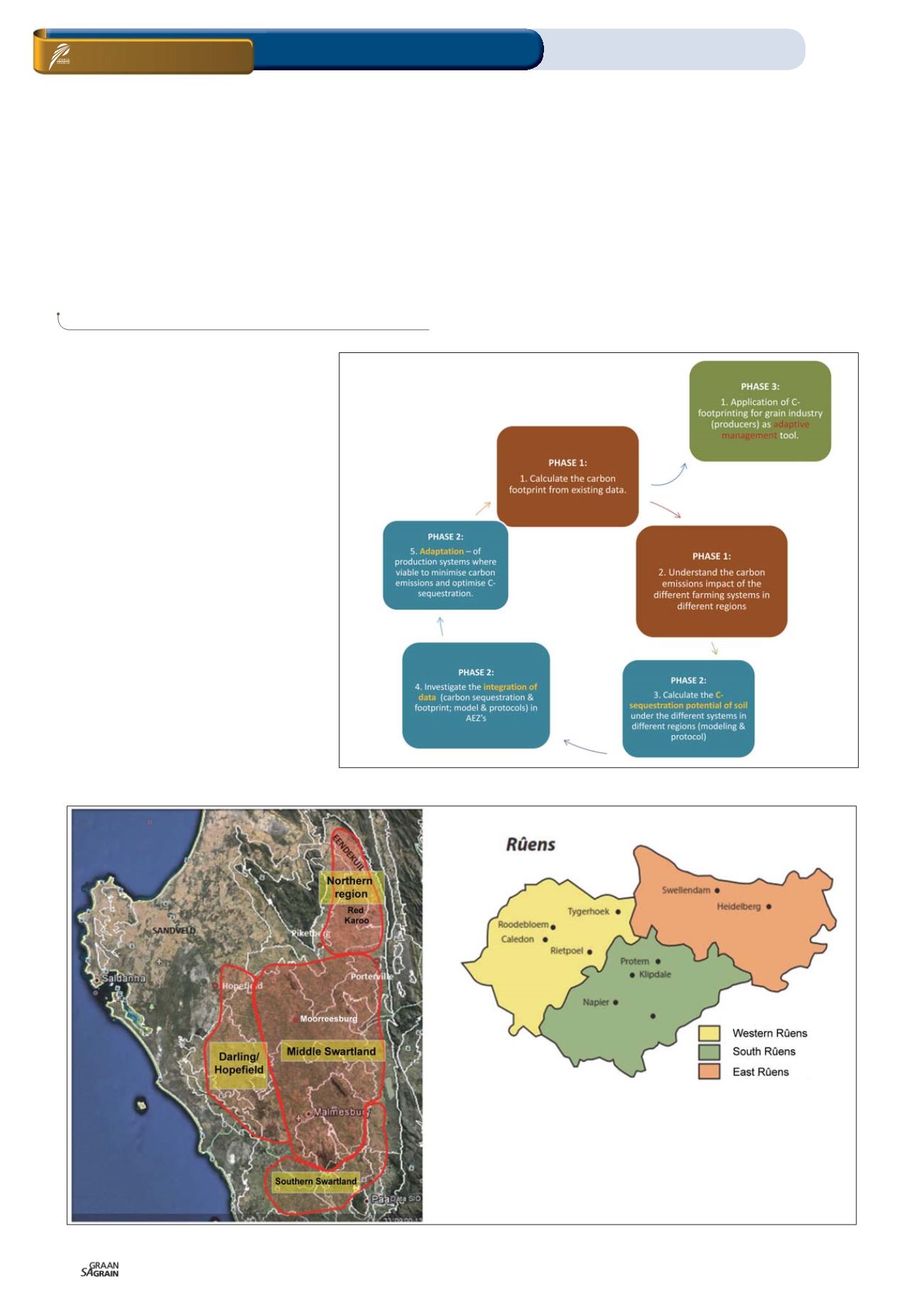

Januarie 2019
20
CARBON EMISSIONS of grain farming
in the Western Cape assessed
G
rain SA initiated the Carbon Foot-
print Project, with Phase 1 of the
project aiming to calculate and
compare the greenhouse gas
emissions of different farming systems
in the winter grain region in the Western
Cape. An increase of greenhouse gases in
the atmosphere traps the sun’s radiation or
energy, directly leading to an increase in
the earth’s temperature or so-called global
warming (IPCC, 2007).
The most common greenhouse gases in the
atmosphere are water vapour, carbon diox-
ide (CO
2
), methane (CH
4
), nitrous oxide (N
2
O)
and ozone. Human activities have led to a
significant increase in the concentration of
specifically CO
2
in the atmosphere from the
burning of fossil fuels (coal, oil and natural
gas), deforestation, land use change and
soil erosion (Earth System Research Labo-
ratory, n.d.).
Greenhouse gas emissions are meas-
ured in carbon dioxide equivalents (CO
2
e)
which takes into account all the other green-
house gasses, and will be further referred
to as carbon emissions.
ON FARM LEVEL
Greenhouse gases / Human activities
Conservation agriculture
LORREN DE KOCK,
associate practitioner: Blue North and
DR HENDRIK SMITH,
conservation agriculture facilitator, Grain SA
Figure 1: Carbon footprint project phases envisaged by Grain SA.
Figure 2: Winter grain sub-regions in Swartland and Southern Cape (Rûens) regions, Western Cape.
















